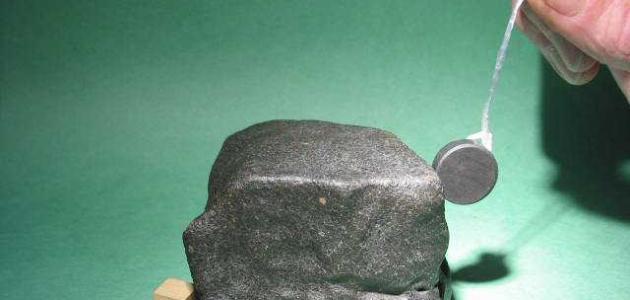solar energy
Demand has recently increased for alternative sources of energy after realizing the disadvantages of fossil energy sources, such as: oil and coal, which pollute the environment and cause global warming, and are also vulnerable to depletion after a period of consumption. Solar energy is one of the sources of renewable energy. That is, it is not penetrable, as the sun shines every morning and provides us with the light and warmth we need. Solar energy can also be exploited by using solar cells that convert sunlight into electrical energy that can be used in many fields.
Solar cells
The photovoltaic cell converts solar energy into electrical energy based on a phenomenon called the photovoltaic effect. Solar cells are often built of semiconductor silicon crystals, and some impurities such as phosphorus are added to them to improve their ability to conduct electricity, and when the sun's rays fall on silicon crystals, they absorb it; Which stimulates the electrons that are linked to each other by covalent bonds to liberate, and begin to move randomly inside the silicon crystal, which generates an electric current. Among the most famous types of solar cells:
- Monocrystalline solar cells: It is made of pure silicon, and it is the most efficient type of solar cell in converting light energy into electrical energy. As its efficiency reaches 20%, and it lasts longer than other types; However, they are considered expensive.
- Polycrystalline solar cells: It is the first solar cell that was manufactured, in 1981 AD, and it is made of silicon crystals that are less pure than those used in making monocrystalline solar cells, so they are less efficient. Its efficiency ranges between 13-16%, and it is also less expensive.
- Solar cell wafers: They are solar cells that are made of several layers of wafers, and their efficiency ranges between 7-13%, and they can be classified into several types according to the material used in their manufacture, including: amorphous silicon, cadmium telluride, selenide, copper, indium, and gallium.
How to make solar energy panels
Solar panels can be manufactured by following the following steps:
Read also:How is iron smelted?- Buying solar cells: When purchasing solar cells, high-efficiency and low-cost cells should be purchased (it is preferable to use polycrystalline solar cells). The number of solar cells is chosen depending on the amount of energy to be produced.
- Preparing a sheet of insulating material: you can choose a sheet of wood, plastic, or glass so that its size is suitable for the number and arrangement of solar cells, while leaving enough distance from the edges to connect the electric wires. The wood board is the best option because holes can be easily drilled in it to pass the electrical wires.
- Measuring and cutting the connecting wires: a number of short lines that extend across the width of the solar cell appear on the solar cell, and two long lines that extend along the length of the solar cell. To cut the connecting wires (in English: Tabbing Wire), each solar cell will need two wires; The length of each of them is twice the length of the two long lines in the center of the solar cell.
- Connecting wire welding: The two connecting wires are welded to the back of the solar cell using a welding gun, and this is repeated for all solar cells. Note that the two wires should be along the two long lines that appear on the front side of the solar cell.
- Installing the solar cells: the cells are installed on the insulating board using glue placed on the middle of the back side of the cells, and a little pressure is applied to install them on the board, then it must be ensured that the two ends of the connection wires appear from each cell, and that the wires can be moved easily, it is preferable to arrange the solar cells in rows Few, on the other hand, it is possible to increase the number of cells in each row, taking into account that the rows of cells are installed in opposite directions, so that the connecting wire appears for the first row on one side, and appears on the opposite side in the next row, and so on, and taking into account leaving an empty space on the edges of the board.
- Connecting the solar cells to each other: the connecting wire is connected at the end of one cell to the front of the next cell, and this is repeated each time, and the wires of the first cell are welded with the wires of the second cell.
- Extend the two connecting wires welded to the first solar cell of the first row, and weld them with a public bus wire, and repeat this in the first cell of the second row.
- Extend the two connection wires at the end of the first row of cells, and the two wires at the beginning of the second row of cells, and solder the four wires using a universal connection wire.
- Connect the rest of the rows in the same way using the long public connection wires until reaching the end, then a short public connection wire is used, such as the one used in the first cell of the first row, the public connection wire connected to the first cell of the first row represents the positive pole of the solar cell panel, while The public connection wire connected to the last cell of the last row represents the negative pole of the solar cell panel.
- Building a box of pressed wood to put the solar cells in it, and it is preferable to paint the box with reflective colors so that the box stays cool; As the cells work better when they are cold, and the coating of the box contributes to protecting it from external factors and prolongs its life. After that, the solar cells are placed inside the box so that it faces upwards.
- Connecting the public connection wire that represents the negative pole to a diode, or a diode (in English: Diode) with an amperage greater than that produced by the solar panels, and fixing it with a little silicon.
- Connect a black wire to the diode, and connect it on the other side to a terminal block that is installed in the side of the box, and connect the opposite side of the terminal block to the positive pole of the solar cell panel.
- Connect the solar panel to a charge controller, taking into account that the negative and positive terminals are properly connected, and connect the wires from the terminal group to the charge controller, and it is preferable to use color-coded wires to track shipments.
- Connect the charge controller to batteries suitable for the size of the solar cell panel, according to the manufacturer's instructions.
- After connecting the batteries and charging them from the solar panels, electronic devices can be powered using the batteries.
- Close the box tightly using a suitable sheet of industrial glass, and be careful to close the gaps to prevent water from leaking into the box.
- Installing solar panels in the appropriate way, and several methods can be chosen, including: installing the panels on a cart so that the direction of the panel can be adjusted depending on the direction of the sun to increase the amount of solar energy that can be obtained during the day, or installing the panels on the roof of the house, provided that the angle of the roof is suitable for the direction of the sun. The sun is at least at its peak time, which is often noon, or the panels can be installed on the base of a satellite receiver, and they can be programmed to move with the movement of the sun.









